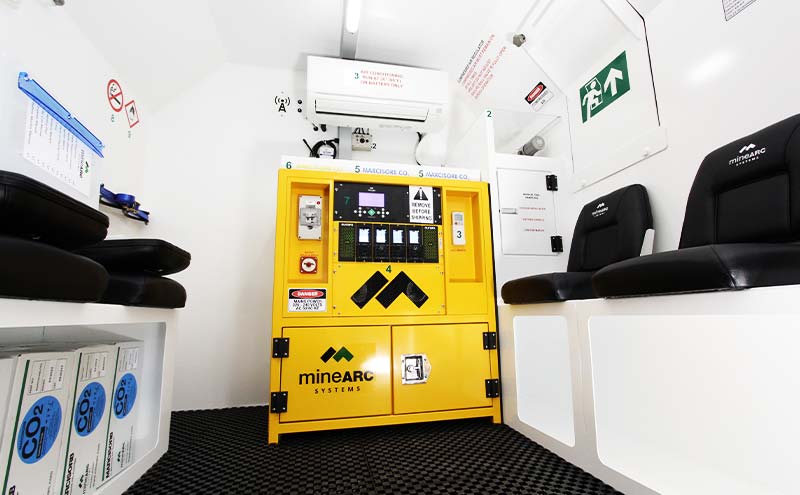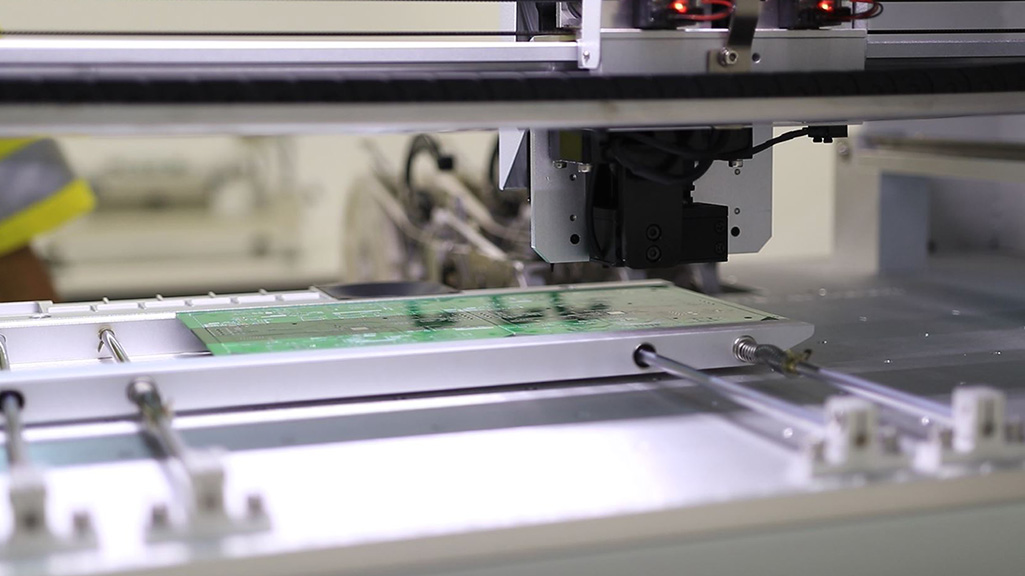A refuge chamber scrubbing system uses chemical reactions to remove contaminants from the air within a sealed environment. An air scrubber helps manage breathable levels by changing the composition of gases exhaled by inhabitants in an emergency.
In any sealed environment, the natural by-products of inhabitants, including CO2 and CO, can build up and poison the air. In high enough concentrations, both CO2 and CO can cause serious injury, leading to a loss of consciousness and, eventually, death. Therefore, removing these harmful gases is vital for any refuge shelter, notably if mains air has failed or become compromised.
Air scrubbing is the process of removing contaminants or undesired gases from the air. It differs from filtration in that a filter is a mesh that screens the air and captures solid particles, whereas scrubbing uses chemical reactions to change the composition of gases as they pass through the system.
Carbon Dioxide in a Refuge Chamber
How Does CO2 Scrubbing Work?
Carbon dioxide scrubbing uses soda lime to generate a chemical reaction that converts CO2 into inert substances.
Air passes through the MARCISORB CO2 Cartridge back into the chamber. A water-mediated base catalysed chemical reaction converts passing carbon dioxide into calcium carbonate and water.
MARCISORB CO2 chemical is precisely engineered to work in conjunction with MineARC refuge chamber technology, from chemical grain size and shape down to packing density, moisture content and usage time calculations.
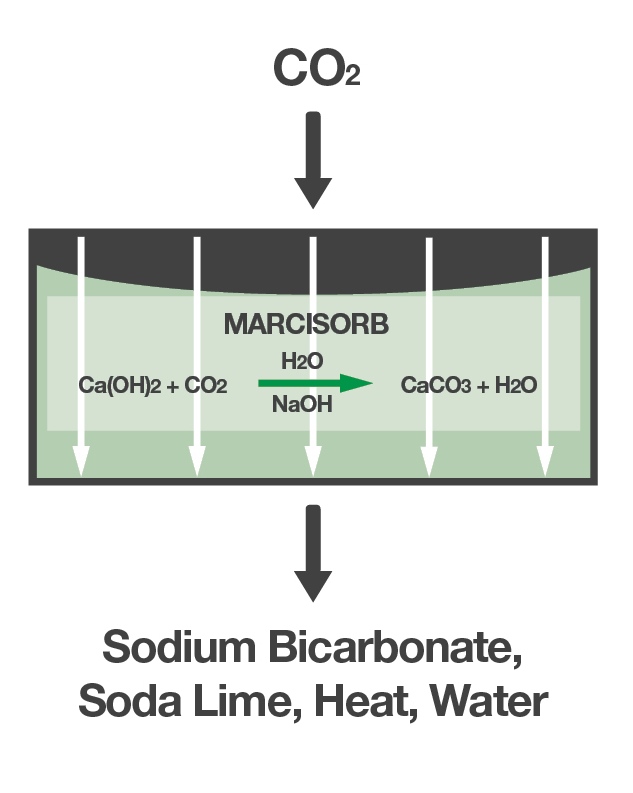
Carbon Monoxide in a Refuge Chamber
Carbon monoxide (CO) is a colourless, odourless and tasteless gas that is slightly less dense than air. It is toxic to including humans and animals in concentrations above 35ppm.
Carbon monoxide is caused by incomplete combustion and is present in exhaust gases of vehicles and combustion engines. It is also present in human blood – an average, healthy adult produces around 10ml/day of CO. Virtually all CO is expelled during natural breathing. Heavy smokers present higher levels.
Carbon monoxide poisoning is a common type of fatal air poisoning, combining with haemoglobin to produce carboxyhaemoglobin, which is ineffective at delivering oxygen around the body. Concentrations as low as 667ppm (0.667%) may cause 50% of the body’s haemoglobin to convert to carboxyhaemoglobin, resulting in seizure, coma and even fatality.
Occupational exposure levels are limited to 50ppm of CO over the long term. A refuge chamber’s enclosed environment compounds carbon monoxide effects and, therefore, must be removed.
How Does CO Scrubbing Work?
Carbon monoxide is scrubbed from the air using a catalytic process. The reaction is exothermic, which means heat generates as a by-product.
The MARCISORB CO Cartridge is a highly active transition metal oxide catalyst formulated for the oxidisation of contaminants such as CO. Air is passed through the MARCISORB CO Cartridge, converting carbon monoxide into CO2 and H2O. The carbon dioxide produced is then removed by MARCISORB CO2.
Portable refuge chambers only require one CO cartridge. The cartridges are also effective at removing other gases, such as ethylene oxide, hydrogen, and ethane.

Refuge Chamber Chemical Scrubber Technology
Series IV Refuge Chamber Scrubbing System
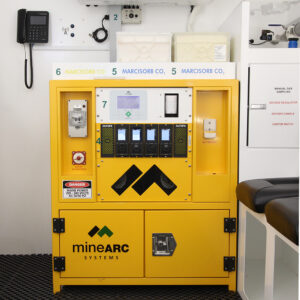
The MineARC Series IV Electrical Scrubbing System is considered the most advanced refuge chamber technology globally. It boasts a host of unique features, including a superior digital control system and intelligent voice audio navigation (i.V.A.N).
- Advanced digital control system
- i.V.A.N Intelligent Voice Audio Navigation
- Intuitive operation
- Motion sensor event logging
- Enhanced network, battery and temperature monitoring
- LCD display
Series IV Scrubbers can be found in most standard, modular, and permanent refuge chambers.
ELV/P Refuge Chamber Scrubbing System
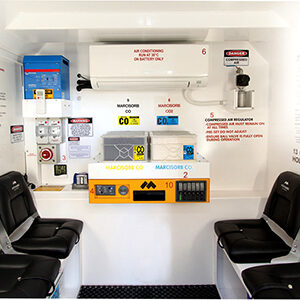
MineARC’s ELVP (Extra-Low-Voltage-Portable) Scrubbing System provides a low cost, portable scrubbing option that allows the refuge chamber to sit stand-alone in standby mode for up to six weeks at a time.
- Extra-low voltage control system
- Basic system and battery monitoring
- 6-week standby mode capability
- LED indicators
ELV Scrubbers can be found in most compact, essential, and narrow design refuge chambers.
How to Remove CO and CO2 in a Refuge Chamber: Chemical Scrubbers?
Providing breathable air within a refuge chamber is a challenge, along with disposing of the carbon dioxide and carbon monoxide we breathe. As occupants within the sealed environments breathe, CO2 and CO will build up. If these gases are not removed from the internal atmosphere, they can build to toxic levels and poison the chambers inhabitants.
Chemical scrubbers use a type of soda-lime to lock onto CO2 molecules. Soda-lime is a mixture of NaOH & CaO chemicals. Carbon monoxide is removed via catalytic oxidation, producing less harmful CO2.
The design and chemical distribution will impact the efficacy of a refuge chambers internal scrubber. Two crucial elements are


